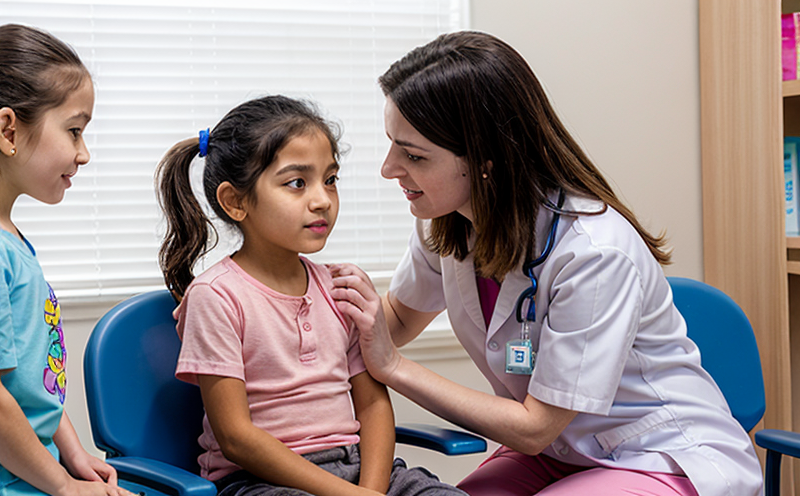Geriatric Muscle Strength Testing in Veterinary Rehabilitation
In veterinary rehabilitation, geriatric muscle strength testing plays a pivotal role in assessing the health and functional capacity of elderly animals. Aging pets often experience a decline in muscle mass and strength due to natural aging processes, degenerative diseases such as osteoarthritis or musculoskeletal conditions, and reduced mobility. These factors can significantly impact an animal's quality of life, mobility, and overall well-being.
Geriatric muscle strength testing is essential for several reasons:
- Early Detection of Decline: The test helps in identifying subtle changes in muscle strength early on, allowing for timely interventions to prevent further deterioration.
- Tailored Rehabilitation Plans: Accurate assessments enable veterinarians and rehabilitation specialists to design personalized treatment plans that address specific weaknesses or areas requiring improvement.
- Monitor Progress: Regular testing is crucial for tracking the effectiveness of rehabilitation programs and adjusting treatments as necessary.
- Predict Outcomes: By assessing muscle strength, clinicians can predict how well an animal will respond to therapy and recovery timelines.
The test typically involves specific procedures that ensure accurate measurement. Specimens are usually collected through a series of standardized physical assessments, which may include manual muscle testing (MMT), gait analysis, or specialized equipment such as dynamometers designed for veterinary use. These tools allow for precise quantification of muscle strength across various body parts.
The importance of this test cannot be overstated in the context of geriatric animal care. It serves not only to diagnose but also to manage and improve the quality of life for elderly pets, ensuring they can continue to lead active lives despite advancing age.
Why It Matters
The significance of geriatric muscle strength testing in veterinary rehabilitation cannot be underestimated. For the elderly pet population, maintaining muscular function is crucial for their mobility and overall health. Declining muscle strength can lead to reduced activity levels, increased risk of falls, and decreased ability to perform daily tasks. This, in turn, can exacerbate existing health conditions and contribute to a general decline in quality of life.
Early detection through this testing allows for the implementation of targeted rehabilitation programs that can help counteract these negative effects. The test results not only provide a clear picture of an animal's current condition but also serve as a benchmark against which future improvements can be measured. This continuous monitoring is vital in ensuring that the treatment plan remains effective and adaptable to the pet's changing needs.
Moreover, the data collected during these tests helps veterinarians and rehabilitation specialists design more comprehensive care plans. By understanding where specific muscle groups are weaker or stronger, they can tailor exercises and therapies to address those particular areas. This personalized approach ensures that every aspect of an elderly animal's health is considered and addressed.
The broader impact extends beyond individual pets; it also contributes to advancements in veterinary medicine by providing valuable insights into the aging process in animals. Research based on comprehensive testing data can lead to better understanding and treatment methods for common geriatric conditions, ultimately benefiting a wider range of elderly pets.
Why Choose This Test
- Precision Measurement: Utilizes state-of-the-art equipment such as dynamometers tailored specifically for veterinary use to ensure accurate and reliable results.
- Comprehensive Evaluation: Evaluates muscle strength across multiple body parts, providing a holistic view of an animal's condition.
- Tailored Recommendations: Based on detailed test outcomes, professionals can provide customized rehabilitation programs that meet the unique needs of each pet.
- Non-Invasive: The tests do not require invasive procedures, making them safe and stress-free for elderly animals.
- Reproducibility: Results are consistent across multiple testing sessions, allowing for accurate tracking of progress over time.
- International Standards Compliance: Adheres to international standards such as ISO 9230 (Manual Muscle Testing) and ASTM F1578 (Dynamometer Specifications), ensuring high-quality and reliable assessments.
The test is highly regarded in the veterinary community for its ability to provide precise, non-invasive evaluations that are both safe and effective. It offers a robust framework for assessing muscle strength in geriatric pets, making it an essential tool in veterinary rehabilitation.
Customer Impact and Satisfaction
The implementation of geriatric muscle strength testing has significantly enhanced the quality of care provided to elderly pets by veterinarians and rehabilitation specialists. Pet owners have reported increased satisfaction with their pets' overall health and well-being, noting improvements in mobility and activity levels.
The test results allow for more informed decision-making regarding treatment plans, leading to better outcomes for pets. This has not only improved the physical condition of elderly animals but also positively impacted their mental state, reducing stress and anxiety associated with aging-related changes.
Moreover, the data collected through these tests supports continuous improvement in veterinary care practices. By tracking trends over time, professionals can refine their approaches to better serve geriatric pets, ultimately contributing to a more compassionate and effective healthcare system for all animals.





